1. Remaining Challenges
Water is critical to the survival of human beings and directly and indirectly supports human life as drinking water, domestic water, and water necessary for economic activities to ensure food production and human livelihoods. For healthy and cultured living, people need to establish and maintain a sound water cycle by preserving good water environments and making appropriate and efficient use of water.
In particular, the supply of safe water and improvement of sanitation leads to the reduction of diseases, and is also considered a very important element of "human security", protecting people from threats to their survival, livelihood and dignity. For example, it is said that 500,000 people die [1] every year due to waterborne diseases such as diarrhea, dysentery and cholera, many of them being infants. In addition, 50% [2] of child malnutrition is said to be related to frequent diarrhea and parasitic diseases associated with unsafe water, lack of access to sanitation facilities, and inappropriate handwashing and so on.
There are still many people that fetch water daily to obtain drinking water, and many of them are women and children. Some families are also forced to bear large expenses to purchase water or for medical costs associated with waterborne diseases. The safe and affordable water supply is related to the solution of gender equality, education, maternal and child health and poverty reduction issues, as well as social and economic development.
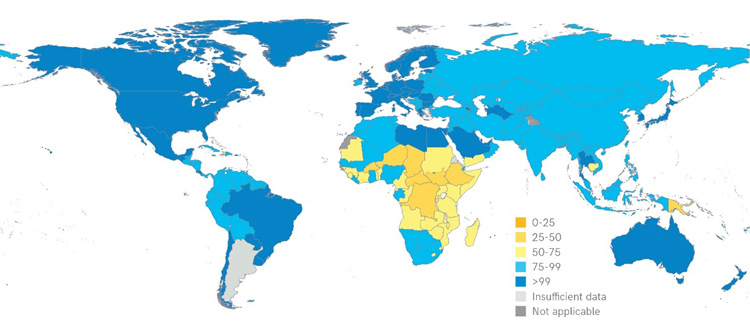
Fig. 1 Percentage of People with Access to Basic Water Supply Services
Source: Progress on household drinking water, sanitation and hygiene 2000-2020: five years into the SDGs, JMP
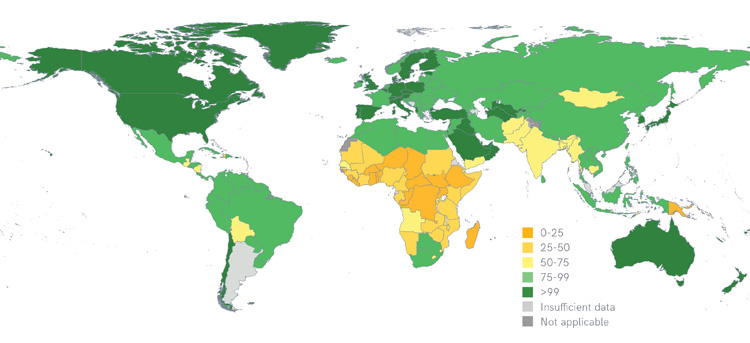
Fig. 2 Percentage of People with Access to Basic Sanitation Facilities
Source: Progress on household drinking water, sanitation and hygiene 2000-2020: five years into the SDGs, JMP
As of 2020 it was estimated that there were still 771 million people [3] without access to basic drinking water services.
In addition, as of 2020 about 1.7 billion people [3] had no access to basic sanitation facilities (toilets), and 494 million people [3] , practiced open defecation. This is particularly serious in Sub-Saharan Africa and South Asia, and a serious risk to people's health.
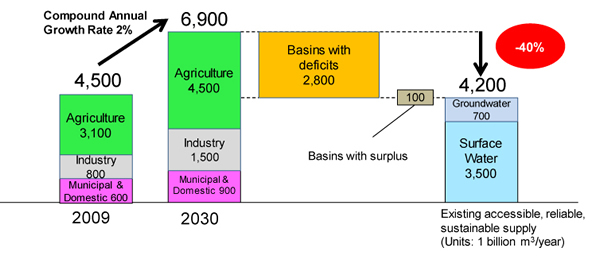
Fig. 3 Diagram showing that Water Demand will Exceed Water Resources by 40% in 2030
Note: Diagram edited from "Charting Our Water Future", The 2030 Water Resources Group
Issues in relation to water resources are expected to become an even greater concern in the future, and water demand is expected to rise along with population growth, economic development, and improvement in living standards, and so on. There are reports that by 2030 water demand will exceed global water resources by as much as 40%, and this will be a particularly serious problem in developing countries where populations are expected to grow. In terms of water resources, irrigation water for food production accounts for about 70% of water use. Water is also important for energy supply and the resulting constraints on food and energy security are also a concern. There is a strong need, for a variety of purposes, to ensure the efficient allocation of limited water resources and to improve sustainable water use.
2. Sustainable Development Goals (SDGs)
In September 2015, the Sustainable Development Goals (SDGs), consisting of 17 goals and 169 targets, were adopted at the United Nations Sustainable Development Summit, establishing development targets for the international community by 2030. As part of this, Goal 6 is particularly dedicated to the fields of water and sanitation, setting out to "Ensure the availability and sustainable management of water and sanitation for all". The targets have a broader content than the MDGs, including the improvement of ambient water quality, efficient water use and sustainable water withdrawals, the integrated water resources management (IWRM) and water-related ecosystem conservation, in addition to the access to safe water and sanitation taken over from the MDGs.
With particular regard to water supply, the MDGs evaluated access to safe water based on "whether there is access to improved water source", while the SDGs include in the Target 6.1 the terms "safe", "affordable" and "equitable" in relation to access. In addition, the World Health Organization (WHO) and the United Nations Children's Fund (UNICEF), which monitor the achievement of the target, have advocated defining the final goal of "safely managed drinking water" as "drinking water from an improved water source (piped water, boreholes or tubewells, protected dug wells, protected spring, rainwater, etc.) which is located on premises, available when needed and free of faecal and priority contamination." Thus, one of the major features of the SDGs is the focus on "quality" of access to drinking water, including water quality, price and labor involved in fetching water, and so on.
3. Japan's Experience, Initiatives and Policies
Japan has also faced many challenges which have been overcome, such as the spread of waterborne diseases like cholera etc., frequent water restrictions due to drought, high water leakage rate of 70-80% at post-World War II, land subsidence due to excessive groundwater pumping, pollution of rivers and lakes due to domestic and industrial wastewater, and so on. Today, Japan has achieved a virtually 100% water supply coverage supplying water suitable for drinking from the tap 24-hours a day. Some of the world's leading achievements also include the settling of land subsidence and high water use efficiency, such as the reuse of industrial water and the control of leakages.
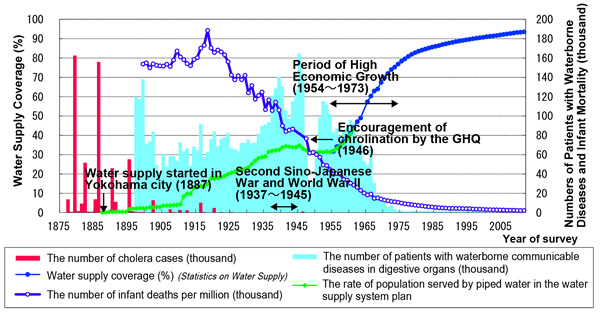
Fig. 4 Japan's Water Supply Coverage Rate, Number of Waterborne Disease Patients, and Infant Mortality Rate
Note: Figure edited from Water Resources Dep., Water and Disaster Management Bureau, Ministry of Land Infrastructure, Transport and Tourism, "Water in Japan" (2014)
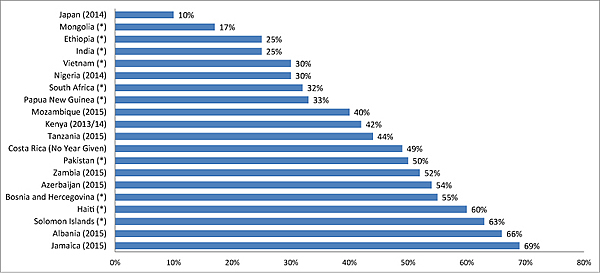
Fig. 5 Non-revenue Water Rates in Various Countries
*Countries with Asterisk: Average non-revenue water ratio calculated from the three largest scale water utilities in the country
Note: Created based on UN-Water, GLAAS 2016/2017 Country Survey (2017), Japan Water Research Center Hot Water News No. 543 (2016)
Japan has been playing an active role in international cooperation, taking advantage of its own experience. For example, Japan has contributed to the holding of large-scale international conferences, including the "3rd World Water Forum" (Kyoto, Osaka and Shiga) in March 2003, and the "1st Asia-Pacific Water Summit", Beppu City in December 2007.
Since 2007, Japan has been the world's leading development partner in the fields of water and sanitation, contributing approximately USD10 billion [4] in disbursement in the nine years to 2015.
Also, in the ten years from 2006 to 2015, JICA has provided water supply services for about 35.72 million people, and through technical cooperation has contributed to the human resources development of about 42,000 people in the field of water and sanitation.
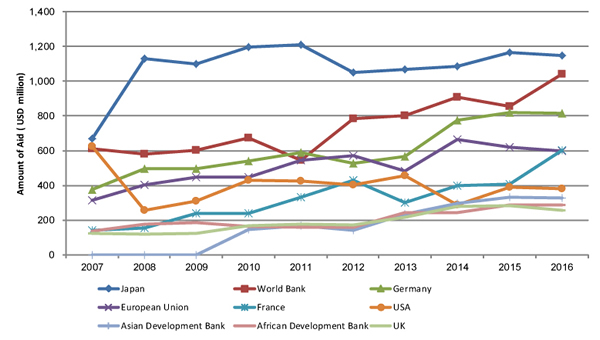
Fig. 6 Trends in Amount of Support by Major Donors in the Field of Water and Sanitation (2007-2016)
Note: Created from OECD-DAC Creditor Reporting System (CRS)
The "Development Cooperation Charter" decided by the Japan's Cabinet in 2015 recognizes in its preamble that, the water-related issues are one of the risks which can have a direct negative impact on peace, stability and prosperity of countries worldwide including Japan, and pledged to provide necessary assistance to promote people-centered development that supports basic human life necessities, including safe water supply and sanitation, as part of its priority policies of "quality growth, and poverty eradication through such growth". Also, its priority policy of "building a sustainable and resilient international community through efforts to address global challenges" includes initiatives to promote actions against climate change and infectious diseases, as well as the development of a sound water cycle.
Hence, in accordance with Japanese policy, JICA utilizes the experience, technology, and past achievements of Japan and in other countries to actively and continuously contribute to the solution of water resource issues throughout the world.
Notes
[1] World Health Organization (2017), http://www.who.int/mediacentre/factsheets/fs330/en/ , Accessed October 6, 2017
[2] WaterAid (2016) "Water: At What Cost?",
[3] UNICEF and World Health Organization (2015) "Progress on sanitation and drinking water - 2015 update and MDG assessment"
[4] OECD-DAC Creditor Reporting System, https://stats.oecd.org/Index.aspx?DataSetCode=CRS1 , Accessed October 2, 2017




scroll